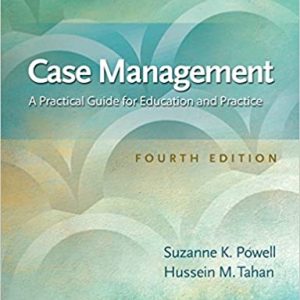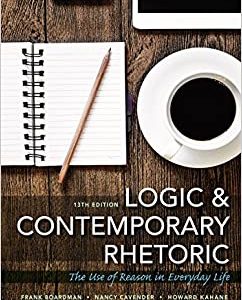Introduction to Operations and Supply Chain Management 3rd Edition by Cecil B. Bozarth
by Cecil B. Bozarth (Author), Robert B. Handfield (Author)
ISBN-13: 9780132747325
ISBN-10: 0132747324
NEW TO THE THIRD EDITION
With this third edition, we have sought to deepen our coverage of important operations and
supply chain topics while still maintaining a trim, integrated book. Here are some of the
highlights:
Chapter 2, ?Operations and Supply Chain Strategies,? begins with an examination of
Netflix?s strategic shift from a supply chain strategy dominated by physical activities to
one dominated by information flows. The experience of Netflix reinforces the idea that
supply chains can link together players through physical flows, information flows, or
monetary flows. The idea of using information flows to replace physical flows is one we
return to throughout the book.
Chapter 3, ?Process Choice and Layout Decisions in Manufacturing and Services,?
now includes a discussion of the five sources of customer-induced variability in services,
as described by Professor Frances Frei of the Harvard Business School. The discussion
highlights the unique challenges businesses face when designing services processes for
customers with widely differing needs and capabilities.
Chapter 4, ?Business Processes,? continues to be a topic of growing relevance to
operations and supply chain managers. Recently, experts have sought to better understand
when tools such as Six Sigma and process mapping are useful and when they are
not. To address this, Chapter 4 now includes a discussion, ?How Standardized Should
Processes Be?? based on a Harvard Business Review article by Professors Joseph Hall and
M. Eric Johnson of the Tuck School of Business. Other revisions to Chapter 4 include a
deeper discussion of swim lane process maps, as well as competitive benchmarking data
from the airline industry.
In keeping with our increased focus on service operations, Chapter 5, ?Managing
Quality,? begins with a discussion of how changes to the baggage handling process at
Atlanta?s Hartsfield-Jackson International Airport have significantly reduced the number
of mishandled bags.
Chapter 6, ?Managing Capacity,? now includes coverage of process flow analysis using
Little?s Law, as well as a much-improved treatment of the Theory of Constraints. We
also demonstrate how waiting line theory and Little?s Law reinforce one another and
how both bodies of knowledge can be used to provide managers with a deeper understanding
of the relationship between capacity and waiting lines.
In response to our adopters, Chapter 7, ?Supply Management,? now provides an integrated
treatment of sourcing and purchasing issues in a single chapter. Our discussion of
the strategic sourcing process is centered on an easy-to-understand six-step model and
is supported by detailed examples of spend analysis and category profiling. The chapter
also distinguishes between the strategic sourcing process and the procure-to-pay cycle,
which covers day-to-day purchasing activities.
Chapter 9, ?Forecasting,? now includes coverage of mean absolute percentage error
(MAPE), MFE, MAD, and tracking signals.
Chapter 12 Supplement, ?Supply Chain Information Systems,? has been updated to
include a discussion of business process management tools and systems, as well as cloud
computing and its impact on future operations and supply chain practices.











